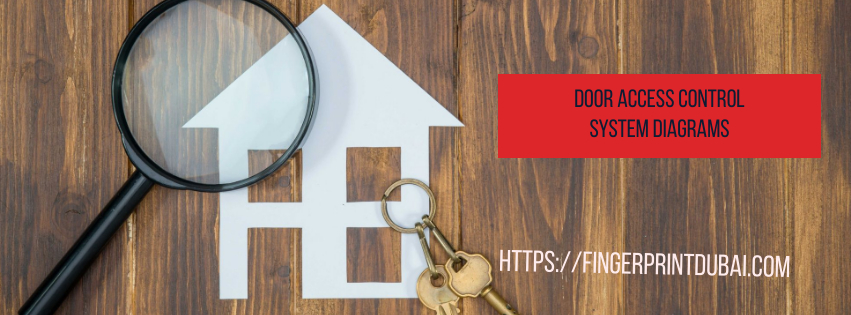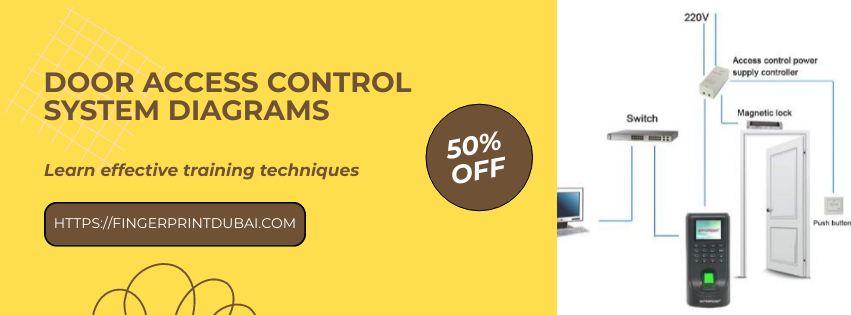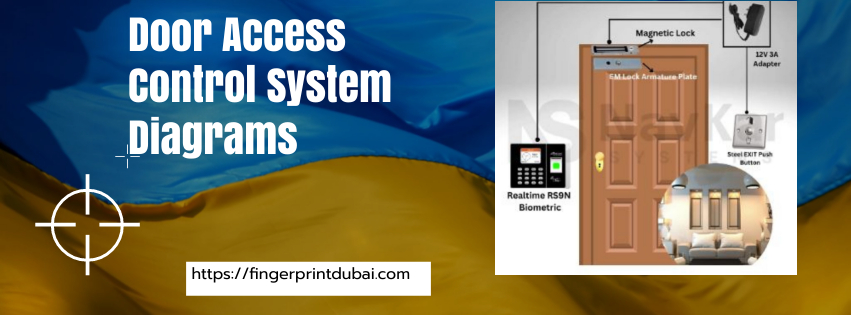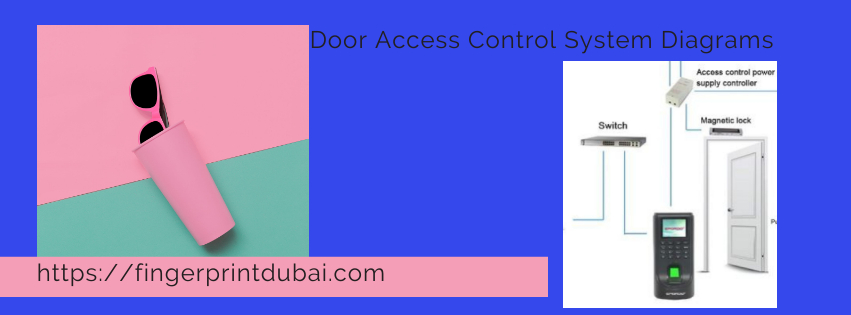Access Control System Diagram
Ever wondered what an ABM Door access control system diagram is? It’s more than just a simple opening diagram. It’s a precisely engineered main entrance gateway route, often inconspicuous, designed to provide crucial entry to concealed areas for maintenance, inspection, or system operation. Think of it as an undisclosed passage for technicians and building managers, ensuring that vital infrastructure remains accessible yet out of sight. These unsung heroes of building design play a pivotal role in safety, efficiency, and the longevity of countless systems.
A Look at Door Access Control System Diagram
Ever wondered how those fancy doors at your office, gym, or even your apartment building know exactly who to let in and when? It’s all thanks to the magic of door access control systems, and at the heart of understanding them lies the door access control system Dubai diagram. Think of it as the blueprint that brings security to life.
We’ve all been there: fumbling for keys, wondering if we locked the door, or needing to grant temporary access to a friend. Traditional locks just don’t cut it anymore for modern security needs. That’s where access control steps in, offering a smarter, more efficient, and incredibly secure way to manage who goes where. We plunge into the necessary module base components that make these access control systems pulsation!
1. The Brains of the Operation: The Controller
Every great story needs a protagonist, and in our access control narrative, that’s the controller. This is the central processing unit, the “brain,” of the entire system. It stores all the access rules, user credentials (like your fingerprint or access card ID), and makes the real-time decisions about who gets in.
Imagine a bouncer at an exclusive club. They check your ID, verify you’re on the guest list, and then decide if you can enter. The controller does pretty much the same thing, but with lightning speed and unwavering accuracy. It’s constantly communicating with all other parts of the system, ensuring seamless operation. Some systems might have a single controller for many doors, while others might have distributed controllers, with one managing just a few doors.

2. Your Digital Key: The Reader
How does the controller know who you are? That’s where the reader comes in. This is the device you interact with directly. It could be a:
Card Reader: The classic swipe or tap for your RFID card or fob. Think about tapping your metro card – same principle!
Biometric Reader: Fingerprint, facial recognition, or even iris scans. This is like a personalized, un lose able key.
Keypad: Where you punch in a PIN code. Remember those old school alarm systems? It’s a bit like that, but smarter.
The reader’s job is to capture your credential (your card tap, fingerprint, or PIN) and send that information to the controller for verification. It’s your handshake with the system.
3. The Gatekeeper: The Electric Lock
Once the controller gives the green light, something physical has to happen to unlock the door. Enter the electric lock. Unlike a traditional mechanical lock, these are powered and controlled by the access control system. Common types include:
Magnetic Locks (Maglocks): These incredibly strong magnets hold the door shut. When power is applied, they create an electromagnetic bond, and when released, the door opens. They’re great for high-security areas because they provide instant lockdown in case of power failure (though this is often backed up by a battery).
Electric Strikes: These replace the standard strike plate on your door frame and control the latch bolt of a mechanical lock. When activated, they allow the door to open.
Electric Deadbolts/Lever Locks: These integrate the electric locking mechanism directly into the door handle or deadbolt.
The electric lock is the system’s physical muscle, performing the actual act of securing or releasing the door.
4. The Exit Strategy: The Request to Exit (REX) Device
You’ve entered the building, done what you needed to do, and now it’s time to leave. But how does the system know you want to exit without triggering an alarm or requiring you to present your credentials again? That’s the role of the Request to Exit (REX) device.
This is typically a:
Push Button: A simple button you press to momentarily unlock the door.
Motion Sensor: Often mounted above the door, it detects your movement as you approach and unlocks the door automatically. This is super convenient, especially when your hands are full.
The REX device provides a safe and easy way to exit the secured area without needing further authentication. It’s all about smooth flow!

5. The Power Behind It All: Power Supply and Battery Backup
No electronic system works without power, and access control is no exception. A dedicated power supply converts the building’s AC power to the DC power required by the system’s components.
But what happens if there’s a power outage? That’s where the battery backup comes in. This ensures the system remains operational for a certain period, keeping your premises secure even when the lights go out. Imagine a hospital or a data center – continuous security is non-negotiable!
6. The Eyes and Ears: Sensors and Alarms (Optional, but Recommended)
While not always part of the core diagram, sensors and alarms are crucial for a truly robust access control system.
Door Position Sensors: These small sensors detect whether a door is open or closed. The Sensors can activate a distress siren if a door is left a part for too long (a “door warning” alarm) or forced open (a “door forced” alarm).
Alarms: Integrate with your existing security system to alert you to unauthorized access attempts, forced entries, or door ajar conditions.
These elements provide an extra layer of vigilance, making your access control system not just a gatekeeper, but a watchful guardian.
Putting It All Together: The Diagram in Action
So, how does it all connect? A typical door access control system diagram visually represents these components and their connections. You’ll see lines showing power flowing from the power supply to the controller, data lines connecting the reader and REX device to the controller, and control lines from the controller to the electric lock.
Understanding this diagram is key to designing, installing, and troubleshooting these systems. It’s like reading a map before embarking on a journey – you know exactly where everything is and how it all fits together.
From a simple single-door setup to complex multi-site, networked systems, the fundamental principles remain the same. These diagrams are the universal language for anyone working with physical security, ensuring that our buildings are not just structures, but secure sanctuaries. So next time you tap your card or press that button, remember the intricate dance of components working silently in the background, all thanks to a well-designed door access control system diagram!

Why Do We Even Need an Access Door? The Unseen Champions of Our factories and Offices
Let’s face it, nobody wants to see a tangle of wires, a maze of pipes, or the inner workings of an HVAC system exposed. That’s where the ABM dynamic access door leaps in, wrap flowing all cabling work by WIFI device.
Concealment and Aesthetics: Imagine your beautifully painted living room wall. Now imagine a tiny hole for revealing on wall for access control cable lying. Not pretty, right? An access door allows essential systems to be hidden behind finished surfaces, preserving the aesthetic integrity of a space. It’s like magic, but with screws and hinges!
Maintenance and Repair: What happens when a wire breaks behind a wall? Without an access door, you’re looking at entry on same time – repairing the wire cause a messy, costly, and time-consuming nightmare. A strategically placed access door provides immediate and easy entry for fixers, electricians, or HVAC technicians to diagnose and fix issues with minimal disruption. It’s the difference using ABM WIFI dynamic face recognition between a quick fix and use a traditional wire base devices cause major renovation.
Safety and Compliance: Many building codes mandate the presence of access doors for certain systems, especially those involving electrical wiring, plumbing shut-off valves, or fire suppression components. This isn’t just about convenience; it’s about ensuring safety and allowing quick response in emergencies. ABM innovative FZE access door can exactly be a rescuer from any annoying incident.
System Optimization: Regular inspections and maintenance through an access door can help ensure that building systems operate at peak efficiency, reducing energy consumption and extending the lifespan of equipment. It’s preventative medicine for your building!
Diving Deeper: Types of Access sliding Doors – Not All Access swing Doors Are Created Equal!
Just like shoes, access doors come in a variety of styles and for different purposes. The type of access door needed depends heavily on where it’s installed and what it needs to conceal.
Wall Access Doors: These are perhaps the most common type of access door. They blend seamlessly into drywall, plaster, or masonry walls, providing discrete entry to plumbing, electrical, or HVAC components. Some are paintable, making them virtually invisible.
Ceiling Access Doors: Often found in commercial buildings or homes with drop ceilings, these access doors offer access to overhead systems like ventilation ducts, wiring, or lighting fixtures. The client need to be select ABM insubstantial Door access control which is easy to open above the normal swing doors.
Floor Access Doors: These heavy-duty access doors are designed to be installed in floors, providing access to basements, crawl spaces, or underground utilities. They are built to withstand foot traffic and sometimes even vehicle loads, often featuring reinforced construction.
Fire-Rated Access Doors: Safety first! These ABM Innovative FZE specified access doors are fabricated with fire-resistant materials and mechanisms to prevent the spread of fire and smoke between compartments, crucial for meeting fire safety regulations. They are essential for protecting vital infrastructure and occupants.
Exterior Access Doors: When you need an access door on the outside of a building, it needs to be weather-resistant and secure. These tempered access Glass doors are built to withstand the elements while providing access to outdoor services or controlled structure systems.
FAQs: Your Burning Questions About Access Doors Answered!
Still got questions about the humble yet mighty access door? Let’s tackle some common queries.
Q1: Can I install an access door myself?
A1: While a small, basic access door for drywall might seem like a DIY project, it’s often best left to professionals. Proper installation ensures the access door is secure, blends seamlessly, and maintains any required fire ratings. Many unauthorized fixer practiced incorrect installation which can compromise structural reliability or protection.
Q2: Are all access doors fire-rated?
A2: No, not all access doors are fire-rated. Fire-rated access doors are specifically designed and tested to meet fire safety standards and are clearly labeled as such. It’s crucial to use the correct type of access door for areas requiring fire protection.
Q3: How do I know what size access door I need?
A3: The size of the ABM access door keypad depends on the size of the wall space and opening required to access the concealed cable lying system. It’s important to measure the whole area carefully and consider the maneuverability needed for maintenance or repairs. Err on the side of slightly larger if unsure, as squeezing through a tiny access door is no fun!
Q4: Can an access door be aesthetically pleasing?
A4: Absolutely! Many modern access doors are designed to be paintable, allowing them to match the surrounding wall or ceiling perfectly. Some even come with trim options or can be custom-made to blend seamlessly with specific architectural styles. The ABM goal is always not compromised of an automatic access door is often to be unnoticed.

Conclusion,
The access door is far more than just a panel in a wall; it’s a critical component of modern construction and facility management. We’ve defined what an access door is and explored its indispensable role in maintaining the aesthetics, functionality, and safety of our built environments. From providing discreet entry for essential maintenance to meeting crucial safety regulations, the access door is an unsung hero. Understanding the different types of access doors—whether for walls, ceilings, floors, or those with fire ratings—highlights their versatility and specialized applications. Ultimately, a well-chosen and properly installed access door ensures that our homes and workplaces operate smoothly and safely, often without us even realizing its presence. So, the next time starting new access control installation when you see a subtle square section in a wall, remember it dedicated the substantial purpose that face recognition automatic ABM innovative FZE door access control.

Tags In
4th St, Al Quoz Cemetery, Oasis Mall, Waha Street, Dubai UAE
Email : info@fingerprintdubai.com
Tell : (+971) 052 5571309

